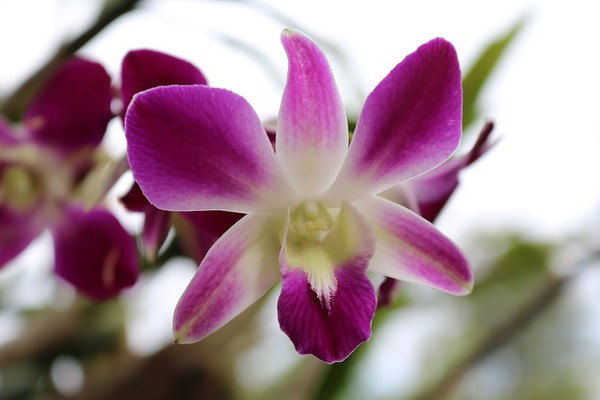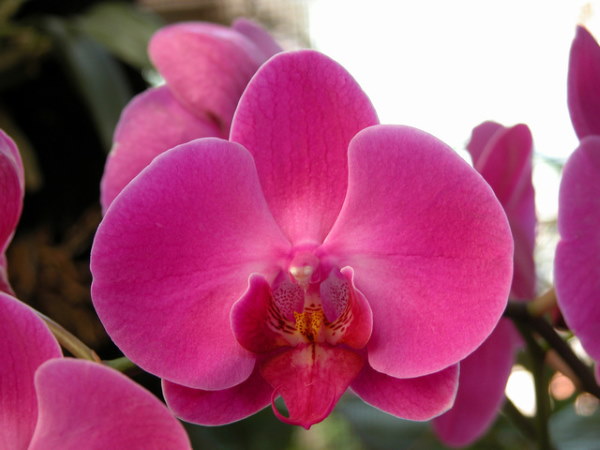Growing Orchids Indoors
When growing orchids indoors, the secret to success is to match your orchid's care with its native habitat.
Considering there are an estimated 20,000 species, originating from nearly every continent on earth, orchids vary in the amount of light, water, and temperatures they prefer.
I'll start off with some general care, then guide you to care pages for several types of orchids that grow well indoors.
 Dendrobiums are among the easiest and most popular orchids to grow as houseplants.
Dendrobiums are among the easiest and most popular orchids to grow as houseplants.Shed some light
One of the biggest challenges of growing orchids indoors is providing enough light. Most orchids grow best with bright, indirect light. However, lady slippers and coelogynes prefer less.
Put your orchids where they'll get plenty of light, but out of direct sun, which can cause brown scorch marks on leaves. If you don't have a spot near a window, artificial lighting works beautifully.
Fluorescent grow lights are energy-efficient and stay cooler so that lights can be placed close to the plants without harming them. Use 1 warm white tube and 1 cool white tube under a reflector. Place orchids about 8 inches (20 cm) beneath the light for 14-16 hours a day. Darkness is also vital for plant growth so this gives your orchids at least 8 hours of total darkness a day. Orchids need a rest, too.
Orchids love humidity
Many popular orchids are content with relative humidity levels around 40-60%. Some like more. So unless you live in the tropics, your plants will likely need a little help from you.
Be aware that central heating can cause dry air without our noticing it. It's a good idea to use a humidity monitor near your orchid, rather than guess. If the humidity drops indoors, use a humidity tray or room humidifier to increase the moisture in the air. Grouping plants also helps to maintain the humidity around them.
 Phalaenopsis orchids bloom prolifically in bright, indirect light. Photo by Ira Kurnia Santoso
Phalaenopsis orchids bloom prolifically in bright, indirect light. Photo by Ira Kurnia SantosoFeed your orchids
Orchid potting mix is typically made of chopped fir bark with a little sphagnum moss and perlite mixed in. This special type of mix drains quickly and allows air around orchids' roots, however it does not contain nutrients that most all-purpose potting mixes do.
You need to fertilize regularly while you're growing orchids indoors to keep them healthy and give them the nutrients they need to promote blooming.
This organic orchid fertilizer contains all the nutrients your orchids need for bigger blooms and healthier roots and foliage. It's easy to use -- just add it to water to give your orchids more blooming power.
Green Thumb Tip
Free-flowing air is key in preventing orchids from catching a fungal disease.
Put them in a spot where they'll enjoy plenty of air circulation. Fans are fine, but keep orchids away from heat or AC vents.
Wondering whether to repot?
Orchid potting medium (which is made up of fir bark and/or sphagnum moss) breaks down after a couple years and becomes too compact in the container. It's a good idea to replace it because compact medium doesn't allow the roots to get air and can cause root rot.
What size pot? Don't use a container that's too big; orchids bloom best when they are slightly root-bound. As a rule of thumb, use a pot that allows 1-inch (2.5 cm) between the rootball and the edge of the pot.
The best time to repot your orchid is when new growth begins, but never while it's blooming.
Growing orchids indoors
Different orchid varieties have different needs. Discover what type of light, water and humidity your orchid prefers to make it really thrive. You'll find it at Caring for Orchids.


